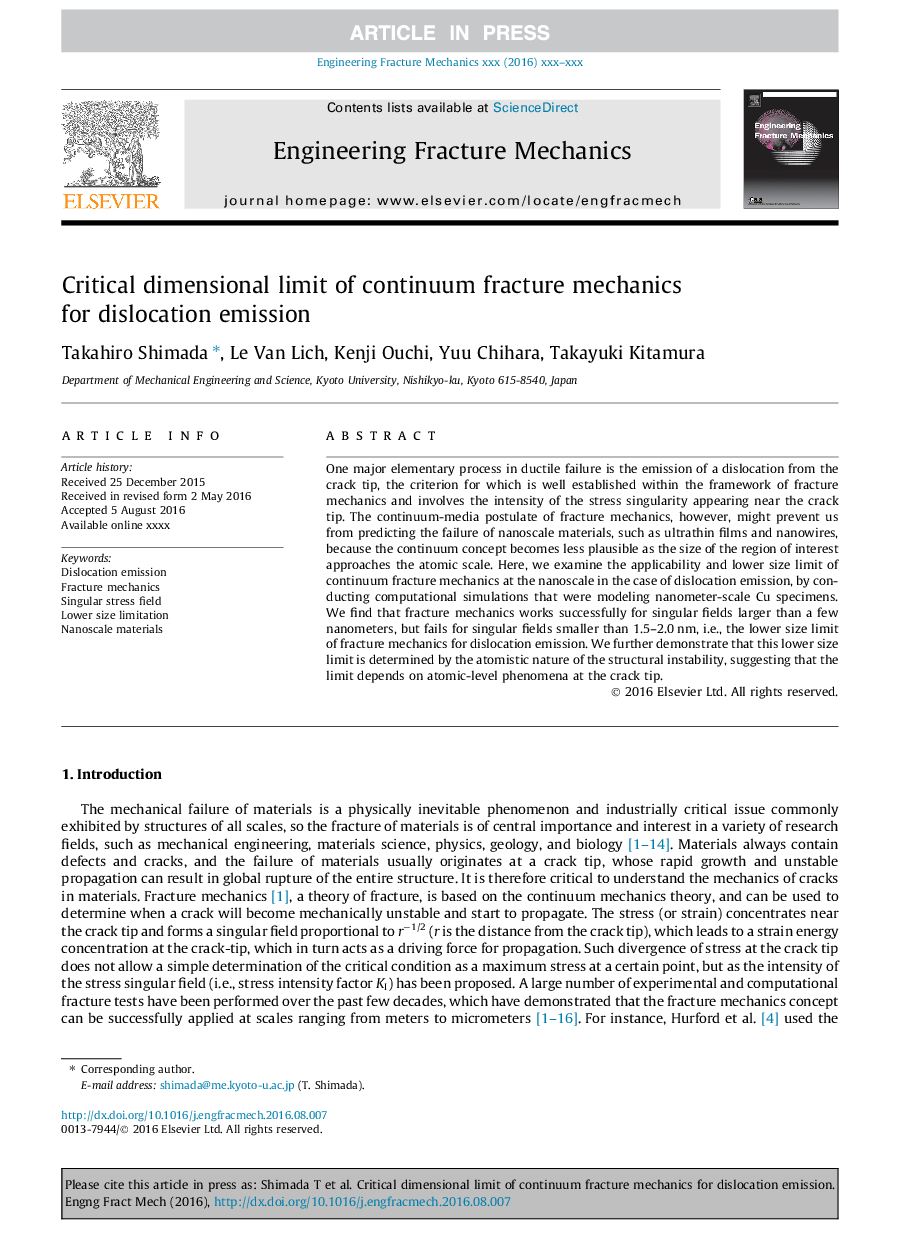| Article ID | Journal | Published Year | Pages | File Type |
|---|---|---|---|---|
| 7169427 | Engineering Fracture Mechanics | 2016 | 9 Pages |
Abstract
One major elementary process in ductile failure is the emission of a dislocation from the crack tip, the criterion for which is well established within the framework of fracture mechanics and involves the intensity of the stress singularity appearing near the crack tip. The continuum-media postulate of fracture mechanics, however, might prevent us from predicting the failure of nanoscale materials, such as ultrathin films and nanowires, because the continuum concept becomes less plausible as the size of the region of interest approaches the atomic scale. Here, we examine the applicability and lower size limit of continuum fracture mechanics at the nanoscale in the case of dislocation emission, by conducting computational simulations that were modeling nanometer-scale Cu specimens. We find that fracture mechanics works successfully for singular fields larger than a few nanometers, but fails for singular fields smaller than 1.5-2.0Â nm, i.e., the lower size limit of fracture mechanics for dislocation emission. We further demonstrate that this lower size limit is determined by the atomistic nature of the structural instability, suggesting that the limit depends on atomic-level phenomena at the crack tip.
Related Topics
Physical Sciences and Engineering
Engineering
Mechanical Engineering
Authors
Takahiro Shimada, Le Van Lich, Kenji Ouchi, Yuu Chihara, Takayuki Kitamura,
